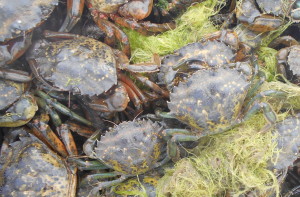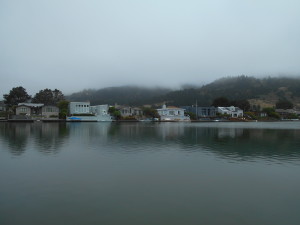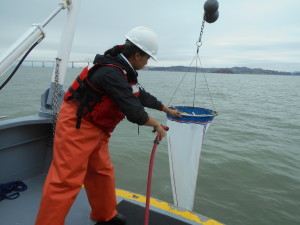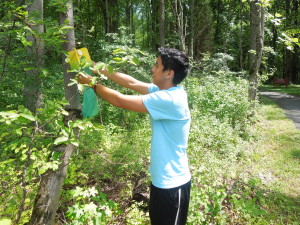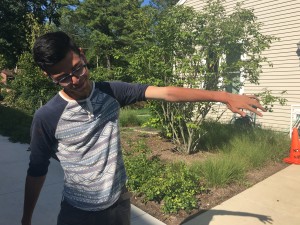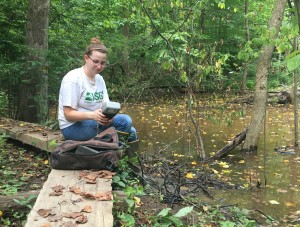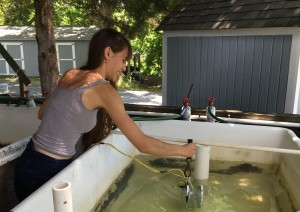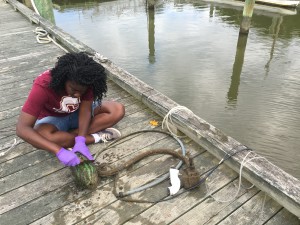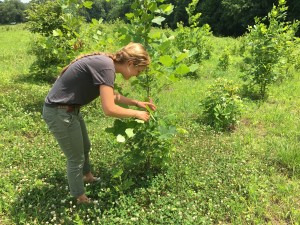by Claire Mueller
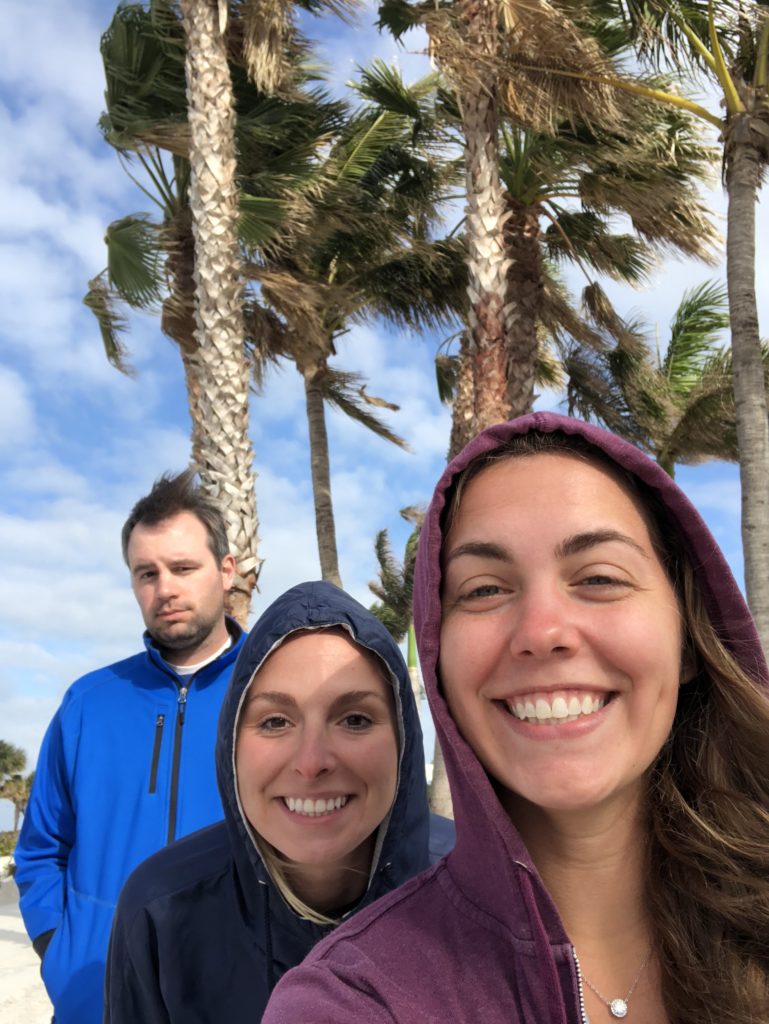
Front to back: SERC interns Claire Mueller and Michelle Edwards, and SERC postdoc Chuck Bangley, explore windy Fort Pierce, Fla.
(Credit: Claire Mueller/SERC)
As the communications intern for the Movement of Life Initiative, I’ve had the pleasure of doing a variety of fun projects, but my favorite was accompanying our marine team this winter to Fort Pierce, Fla., to continue their work tagging sharks with Harbor Branch Oceanographic Institute at Florida Atlantic University. Our mission was to tag as many bull sharks and cownose rays that we could with acoustic transmitters, allowing us to collect location data and determine the movement patterns of these two species.
When I arrived in Florida on January 14, I first caught up with Chuck Bangley, a postdoctoral fellow at the Smithsonian Environmental Research Center (SERC), and fellow SERC intern Michelle Edwards. They had been there since the previous Wednesday, and already had managed to tag four cownose rays and two bull sharks. Matt Ogburn (our fearless leader and principal investigator of SERC’s Fish & Invertebrate Ecology Lab) and Jay Fleming (the professional photographer documenting our expedition) joined the team on Monday night. Click to continue »


